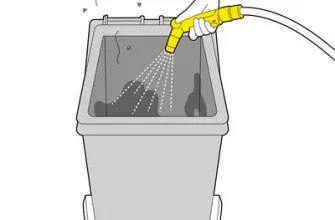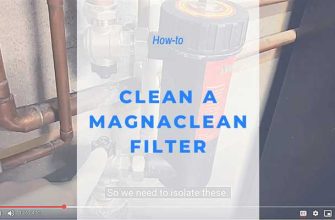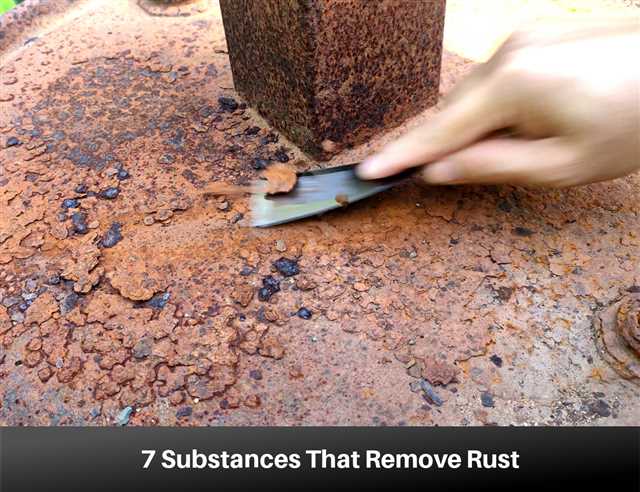
If you want to keep your house looking impeccable, it’s important to know how to properly clean and maintain chrome surfaces. Chrome is a popular choice for fittings and fixtures due to its durability and elegant appearance. However, it is prone to tarnish and rust if not properly cared for.
We’ve all been there – you’re cleaning your bathroom or kitchen, and you notice a little rust or tarnish on a chrome surface. Don’t worry, with a few simple steps, you can remove these blemishes and restore your chrome to its original shine.
Before you start cleaning, it’s important to gather the necessary supplies. You’ll need a soft cloth, a non-abrasive sponge or scrubbing pad, a mild soap or specialist chrome cleaner, white vinegar or lemon juice, baking soda, warm water, and paper towels. These all-natural solutions are effective in removing rust, tarnish, and oxidation without causing any damage.
Start by wiping down the chrome surface with a damp cloth to remove any dirt or grease. If there are stubborn stains or oxidation, you can apply a small amount of soap or specialist chrome cleaner to the cloth or sponge and gently scrub the surface. Be sure to follow the manufacturer’s instructions for the cleaner and use it sparingly to avoid damaging the chrome.
If there are still areas that are tarnished or rusted, you can create a paste using baking soda and water. Apply the paste to the affected areas and gently scrub with a soft cloth or sponge. This method is particularly useful for tackling stubborn rust or tarnish on chrome fittings and fixtures.
Another option is to use white vinegar or lemon juice. These natural acids are great for removing rust and tarnish. Simply soak a cloth or paper towel in vinegar or lemon juice and rub it onto the affected areas. Let it sit for a few minutes, then rinse with warm water. This method is especially effective for removing watermarks and stains on chrome shower fittings.
For chrome taps or other hard-to-reach areas, you can use a toothbrush or cotton swab soaked in vinegar or lemon juice. This will help you get into those awkward corners and crevices.
When cleaning chrome, it’s important to avoid using abrasive cleaners or tools that can scratch the surface. Instead, opt for mild soaps or all-natural solutions. Additionally, be sure to rinse the area thoroughly after cleaning to remove any residue.
In conclusion, cleaning chrome and removing rust and tarnish can be done using simple, all-natural solutions. With a little bit of effort and the right techniques, your chrome surfaces will be shining like new. Remember to follow these tips for regular cleaning and maintenance to prevent rust and tarnish from occurring in the first place. Love your chrome and it will love you back!
- Gather the necessary cleaning supplies
- Prepare the chrome surface for cleaning
- Clean the chrome using a gentle cleaner
- Remove Rust and Tarnish from Chrome
- FAQs
- Rinse and dry the chrome surface
- Rinse with water
- Wipe down with a clean cloth
- Dry the chrome
- Repeat if necessary
- Final tips
- Will vinegar damage chrome fixtures?
- Video:
- How To Clean Rusty Chrome
Gather the necessary cleaning supplies

Before you start cleaning your chrome and removing rust and tarnish, it’s important to gather all the necessary cleaning supplies. Here are some essential items you will need:
- Cleaning solutions: There are various cleaning solutions available in the market specifically designed for chrome cleaning. Make sure you choose one that is safe to use on chrome surfaces.
- Paper towels or soft cloths: These will be used to clean and dry the chrome surfaces.
- Soap and water: In some cases, a simple soap and water solution will be sufficient to clean the chrome. Mix a few drops of dish soap with warm water to create a gentle cleaning solution.
- Vinegar: Vinegar can be used as a natural alternative to cleaning solutions. It is especially effective in removing water spots and discolouration on chrome surfaces.
- Cleanipedia advice: Cola is known for its ability to remove rust and stains from metal surfaces. If you’re dealing with heavily tarnished chrome, consider using cola as a cleaning solution.
- Sponge or soft-bristle brush: These will be used to scrub and clean the chrome, especially in hard-to-reach areas.
- Bucket or basin: Fill it with warm water for rinsing.
- Gloves: To protect your hands from potential chemical reactions or abrasive cleaning agents.
Once you have gathered all the necessary cleaning supplies, you can start the process of cleaning your chrome surfaces and removing rust and tarnish. Ensuring you have all the required equipment and supplies on hand will make the cleaning process smoother and more efficient.
Prepare the chrome surface for cleaning
Before you start cleaning the chrome surface, it is important to prepare it properly. Follow these steps to ensure the best results:
- Remove any loose dirt or debris by rinsing the chrome surface with water. You can use a shower or a hose to do this.
- If there are any visible stains or spots on the chrome surface, you can use a liquid soap or detergent to clean them. Make sure to choose a soap that is compatible with chrome, as some cleaning products may cause damage.
- Using a soft cloth or sponge, gently scrub the chrome surface with the soapy solution. Focus on the areas that need the most attention, such as rust or tarnish spots. Rinse the surface with water to remove the soap residue.
- If the chrome surface has rust or severe tarnish, you may need to use a dedicated chrome cleaner or polish. These products are specifically designed to remove rust and bring back the lost luster of chrome. Follow the instructions on the product label for best results.
- For stubborn rust or tarnish, you can use aluminium foil or aluminium spray to help remove it. Simply crumple up the aluminium foil and dip it in water. Then, rub the foil gently on the affected areas. The reaction between the aluminium and tarnish will help remove the rust or tarnish.
- Alternatively, you can also use a mixture of vinegar and baking soda to remove tarnish on chrome. This homemade solution is effective and can be easily made at home. Mix equal parts of vinegar and baking soda to form a paste. Apply the paste on the tarnished areas and let it sit for a few minutes. Then, wipe it off with a soft cloth.
- After you have cleaned the chrome surface, make sure to dry it thoroughly. Leaving it wet can lead to water spots and build-up of dirt. Use a clean cloth or towel to dry the chrome surface.
- Once the chrome surface is dry, you can consider applying a protective coat to prevent future rust or tarnish. There are chrome polishes or sealants available in the market that can help maintain the shine and prevent oxidation.
By following these steps, you will be able to prepare your chrome surface for cleaning and achieve great results. If you have any questions or concerns, feel free to reach out to us for further assistance.
Clean the chrome using a gentle cleaner
Now that you have gathered the necessary equipment and have removed any loose dirt or debris from the chrome surface, it’s time to clean it using a gentle cleaner.
There are various cleaning methods you can use to clean chrome, but we’ll start with a simple and effective technique using vinegar and baking soda.
- Mix a cleaning solution: In a small bowl, combine equal parts white vinegar and baking soda to create a paste. The vinegar will help break down any built-up grime, while the baking soda will act as a gentle abrasive to remove tarnish and rust.
- Apply the solution: Using a dedicated cleaning cloth or a soft sponge, apply the cleaning solution to the chrome surface. Be sure to cover the entire area that needs cleaning.
- Gently scrub: Using a circular motion, gently scrub the chrome surface with the cloth or sponge to remove any dirt, rust, or tarnish. Apply light pressure to avoid scratching the chrome.
- Use aluminum foil for stubborn stains: If you encounter tougher stains or rust spots, you can use a piece of aluminum foil. Crumple the foil into a ball and dip it into the cleaning solution. Scrub the stubborn stains or rust spots using the foil, and they should come off more easily.
- Rinse and dry: After cleaning, rinse the chrome surface with clean water to remove any residue from the cleaning solution. Use a separate cloth or towel to dry the chrome thoroughly.
Remember, while vinegar and baking soda are effective cleaners, they may not be suitable for all types of chrome. If you have chrome-plated items, such as car parts or kitchen utensils, it’s best to follow the manufacturer’s instructions or use a dedicated chrome cleaner. Some chrome surfaces, such as those with a PVD (Physical Vapor Deposition) coating or a stainless steel finish, may require specialist cleaning sprays or wipes.
Cleaning chrome regularly is important to avoid build-up of dirt, rust, and tarnish, which can eventually lead to discolouration and damage. A good cleaning routine will help keep your chrome looking shiny and new.
Remove Rust and Tarnish from Chrome
Chrome can easily become tarnished or rusted over time. Fortunately, there are simple steps you can follow to remove rust and tarnish from chrome and restore its shine. Here’s a step-by-step guide:
- Begin by wiping down the chrome: Before you start removing rust and tarnish, wipe down the chrome surface with a soft cloth to remove any dirt or debris.
- Use a rust and tarnish remover: There are many commercial rust and tarnish removers available that are specifically designed for chrome surfaces. Simply spray or apply the remover onto the tarnished areas and let it sit for a few minutes.
- Scrub the chrome: After letting the remover sit, use a soft cloth or a non-abrasive sponge to scrub away the rust and tarnish. Apply gentle pressure and scrub in a circular motion to avoid scratching the chrome surface.
- Rinse and dry: Once the rust and tarnish have been removed, rinse the chrome surface thoroughly with water. Use a soft cloth to dry the chrome completely.
- Apply a chrome polish or wax: To further restore the shine and protect the chrome surface, apply a chrome polish or wax. Follow the instructions on the product for best results.
- Polish with vinegar: If you prefer using a natural solution, you can polish the chrome with vinegar. Simply soak a cloth in vinegar and rub it onto the chrome surface. Let it sit for a few minutes, then wipe it off with a clean cloth.
FAQs
Here are some frequently asked questions about removing rust and tarnish from chrome:
- What causes tarnish on chrome? Tarnish on chrome is usually caused by oxidation or exposure to air and moisture. It can also be caused by certain cleaning products or chemicals.
- Can I use household cleaners to remove tarnish from chrome? Yes, some household cleaners can be effective in removing tarnish from chrome. However, be sure to check the compatibility of the cleaner with chrome surfaces before using it.
- How often should I clean chrome fixtures? It is recommended to clean chrome fixtures regularly to prevent the buildup of rust and tarnish. Once every 1-2 weeks is a good frequency.
- Can I use lemon juice to remove tarnish from chrome? Yes, lemon juice can be used to remove tarnish from chrome. Simply soak a cloth in lemon juice and rub it onto the tarnished area. Let it sit for a few minutes, then wipe it off with a clean cloth.
In conclusion, removing rust and tarnish from chrome is a simple process that can be done with a few basic steps. Whether you choose to use commercial removers or natural solutions like vinegar or lemon juice, the key is to scrub gently and rinse thoroughly to restore the shine of your chrome surfaces.
Rinse and dry the chrome surface
After applying the cleaning paste and scrubbing away the rust and tarnish, it’s time to rinse and dry the chrome surface to reveal its shiny and beautiful finish.
Rinse with water
Start by rinsing the chrome surface with water. Use a spray bottle or a hose to thoroughly rinse off any remaining cleaning paste, grime, and loose dirt. Make sure to rinse all the nooks and crannies, as well as hard-to-reach areas.
Wipe down with a clean cloth
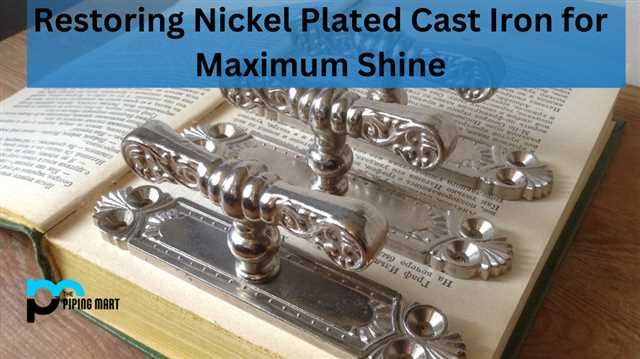
Next, use a clean cloth or towel to wipe down the chrome surface. Make sure to be thorough and wipe away any excess water. This step is crucial to prevent water spots from forming on the chrome surface.
Dry the chrome
To ensure that the chrome surface is completely dry, use another clean cloth or towel to dry it thoroughly. Wipe down the chrome surface until it is completely dry and free from any moisture.
Repeat if necessary
If there are still areas on the chrome surface that are tarnished or have rust, you may need to repeat the cleaning process. Apply more cleaning paste and scrub those areas until they are clean and shiny.
Final tips
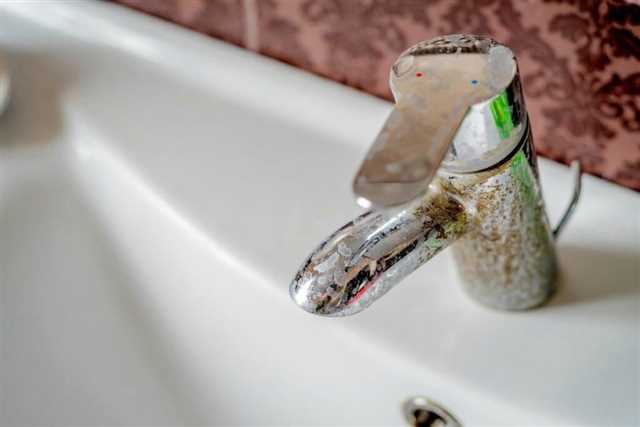
- Consider using a chrome-specific cleaner or metal polish to give your chrome surface extra shine and protection.
- If the chrome surface is heavily tarnished or rusty, you may need to use a more abrasive cleaner or rust remover. Be sure to follow the instructions and use gloves to protect your hands.
- For small chrome accents or electroplated fittings, you can use a mixture of baking soda and lemon juice as a natural cleaner. Apply the paste, scrub with a soft cloth, and rinse with water.
- After cleaning and drying the chrome surface, you can also apply a chrome or metal polish to provide added protection and shine.
- If you’re unsure about how to clean a specific chrome item, consult the manufacturer’s instructions or do a quick search online for cleaning tips and recommendations.
- Remember to always use caution when working with cleaning products, and avoid inhaling fumes or getting the cleaning substances on your skin.
By following these steps and tips, you can keep your chrome surfaces looking impeccable and free from rust and tarnish.
Will vinegar damage chrome fixtures?
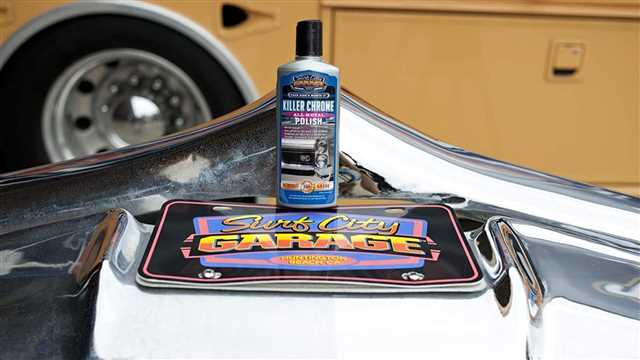
Many people wonder if vinegar is a safe and effective solution for cleaning and removing rust and tarnish from chrome fixtures. Vinegar is often recommended as a natural and cost-effective alternative to harsh chemical cleaners. However, it’s important to understand the potential effects of vinegar on chrome before using it.
Vinegar is quite acidic, which means it can effectively dissolve mineral deposits and tarnish on chrome surfaces. It can also help to remove rust stains. However, vinegar’s acidity may cause some damage to chrome if not used properly.
When using vinegar to clean chrome fixtures, here are some key points to keep in mind:
- Always dilute vinegar with water before using it on chrome. A solution of one part vinegar to three parts water is a common recommendation.
- Test the vinegar solution on a small, inconspicuous area of the chrome to check for compatibility and any adverse reaction.
- If the vinegar solution proves to be safe, you can proceed with cleaning the chrome fixtures.
- Soak a soft cloth or sponge in the vinegar solution and gently scrub the chrome surface in a circular motion.
- For tougher stains or rust, you can mix vinegar with baking soda to create a paste. Apply the paste to the affected area and let it sit for a few minutes before scrubbing.
- Rinse the chrome fixtures thoroughly with warm water after cleaning to remove any vinegar residue.
- Dry the chrome fixtures with a soft cloth to prevent water spots.
In conclusion, vinegar can be an effective and natural cleaner for chrome fixtures, but it’s important to use it properly. By diluting vinegar and testing it on a small area first, you can ensure that it won’t cause any damage to your chrome fixtures.
If you are unsure about using vinegar or prefer a different approach, there are also commercial chrome cleaners and sprays available in the market. These products are specifically formulated to be safe and effective for cleaning chrome surfaces.


